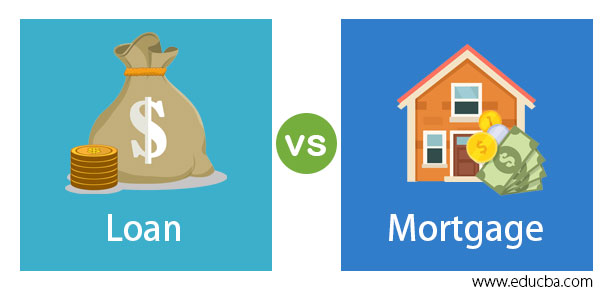Maximize Your Homebuying Possible with Conventional Mortgage Loans
Wiki Article
The Crucial Elements to Take Into Consideration When Choosing In Between Fixed-Rate and Variable-rate Mortgage Lendings
When assessing home loan options, borrowers encounter a pivotal decision between fixed-rate and adjustable-rate fundings, each offering distinct advantages and potential mistakes. Key considerations such as passion price stability, predictability in month-to-month settlements, and the effects of prospective price modifications can considerably influence lasting monetary wellness.Rates Of Interest Stability
When selecting a home mortgage, comprehending rate of interest security is important for informed decision-making. Passion rates can dramatically influence the overall expense of a mortgage, and acknowledging the nature of these rates is important for consumers. Fixed-rate mortgages use the advantage of regular regular monthly settlements over the life of the finance, shielding debtors from market changes. This stability allows home owners to plan their financial resources with higher assurance, as they will certainly not be impacted by increasing rate of interest.On the various other hand, variable-rate mortgages (ARMs) begin with lower preliminary prices that might transform occasionally based upon market problems. While this can lead to lower settlements at first, it likewise introduces uncertainty, as debtors might encounter raised settlements if rate of interest rise. For those thinking about an ARM, it is crucial to examine the likelihood of rate adjustments, the possibility for settlement boosts, and the size of the initial fixed-rate period.
Ultimately, the choice in between adjustable-rate and fixed-rate mortgages rests on individual threat resistance and financial situations. Comprehending interest rate security helps customers make informed choices that straighten with their long-lasting financial goals.
Monthly Settlement Predictability
While debtors commonly prioritize rate of interest stability, the predictability of monthly settlements is just as vital in the home loan selection procedure (Conventional mortgage loans). Regular monthly payment predictability plays an essential duty in budgeting and financial planning, as it straight impacts a house owner's money circulation and overall financial wellnessFixed-rate home loans offer a regular month-to-month repayment throughout the life of the financing, enabling consumers to expect and intend their expenditures successfully. This stability can be specifically helpful for novice buyers or those on a fixed revenue, as it eliminates the uncertainty related to varying settlements.
Conversely, adjustable-rate home mortgages (ARMs) normally include lower preliminary settlements that can alter over time, leading to possible variability in regular monthly commitments. While originally enticing, this unpredictability can complicate monetary preparation, particularly if borrowers do not represent future price adjustments.
Potential Rate Modifications
In the world of adjustable-rate mortgages (ARMs), prospective price changes represent a considerable variable that borrowers should carefully consider. Unlike fixed-rate home loans, where the rate of interest stays the same for the life of the loan, ARMs are characterized by varying rates of interest that are connected to market indices. This variability can cause considerable modifications in monthly payments, impacting the customer's financial planning and budgeting.Borrowers need to be conscious of the margin and index used to compute these modifications, as they directly influence future interest prices. Furthermore, ARMs frequently consist of caps that restrict just how much the passion rate can increase at each adjustment and over the life of the lending, which can give some level of protection against extreme rate walks.
Comprehending these prospective adjustments is essential for debtors, as they straight affect long-term settlement commitments. Evaluating individual monetary scenarios and risk tolerance is crucial when determining whether an ARM aligns with one's economic objectives.
Funding Term Factors To Consider
Funding term factors to consider play a pivotal function in the decision-making process for debtors choosing in between adjustable-rate and fixed-rate mortgages. The size of the loan term dramatically impacts regular monthly repayments, passion prices, and general financial preparation. Fixed-rate mortgages usually provide regards to reference 15 to thirty years, giving security in regular monthly repayments and predictability in budgeting. This can be particularly appealing for borrowers that plan to stay in the exact same home long-term and choose the assurance of set repayments throughout the life of the funding.
Ultimately, debtors should evaluate their personal conditions, monetary objectives, and market problems when weighing the implications of lending term selections within each mortgage kind.

General Price of Loaning
The total cost of loaning is an important factor that can significantly influence a consumer's option in between fixed-rate and adjustable-rate home mortgages. Fixed-rate mortgages supply predictable month-to-month payments, as the rate of interest stays consistent throughout the funding term. This predictability can lead to lower general prices, particularly in a secure or declining rate of interest price setting. Debtors can budget successfully, recognizing their payments will not fluctuate.On the other hand, variable-rate mortgages (ARMs) normally begin with lower preliminary prices, causing lowered in advance costs. These rates can enhance after a preliminary duration, leading to potentially greater lasting prices. Consumers have to take into consideration the frequency and level of price changes, along with the overall financing period, to properly examine the monetary ramifications.
Additionally, the total expense of borrowing encompasses not only rates of interest yet additionally charges and other associated prices, such as shutting prices and insurance policy (Conventional mortgage loans). When reviewing home mortgage choices, borrowers need to carry out an extensive expense analysis over the life of the financing. By doing so, they can make an educated decision that lines up with their economic objectives and take the chance of tolerance
Verdict
In final he has a good point thought, selecting between fixed-rate and adjustable-rate mortgage necessitates cautious consideration of numerous vital elements. Rate of interest stability and regular monthly repayment predictability are paramount for efficient budgeting, while the potential for price changes in ARMs presents financial unpredictability. Additionally, the expected period of homeownership and the overall expense of loaning, including rates of interest and connected costs, should straighten with private monetary circumstances and run the risk of resistance. Such a comprehensive analysis will certainly promote informed decision-making in home loan choice.Key considerations such as interest price security, predictability in regular monthly repayments, and the ramifications of prospective price changes can significantly visit their website impact long-term financial health. Interest rates can significantly impact the overall price of a home mortgage, and recognizing the nature of these rates is essential for borrowers. Unlike fixed-rate home mortgages, where the passion price continues to be the same for the life of the loan, ARMs are identified by rising and fall rate of interest prices that are tied to market indices. In addition, ARMs commonly consist of caps that limit just how much the interest price can boost at each adjustment and over the life of the lending, which can give some degree of security versus drastic price walkings.
Passion rate security and regular monthly payment predictability are paramount for reliable budgeting, while the capacity for price modifications in ARMs presents economic uncertainty.
Report this wiki page